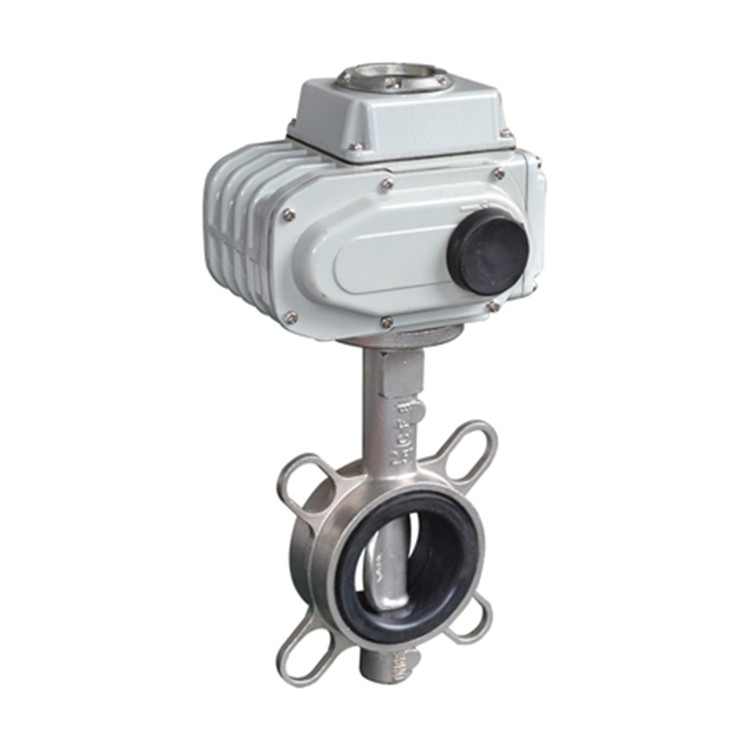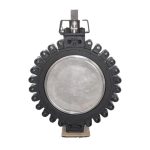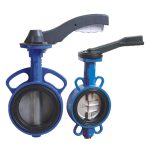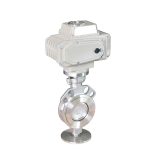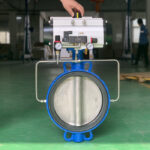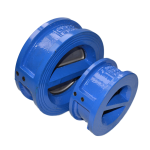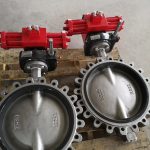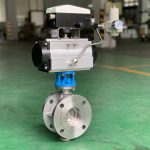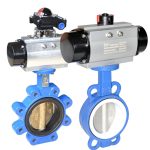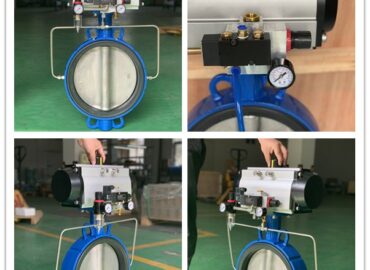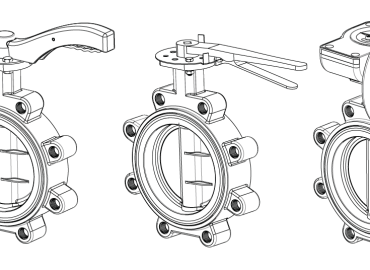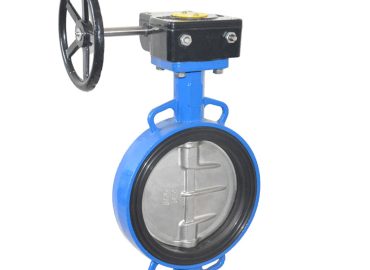In the world of industrial applications, butterfly valve play a crucial role in controlling the flow of various types of fluids. These valves, known for their durability and efficiency, are used extensively across industries such as oil and gas, water treatment, and power generation. However, like any mechanical component, butterfly valve are not immune to failures. Understanding the causes and signs of these failures, as well as their solutions, is key to maintaining operational efficiency and preventing costly downtime. This comprehensive guide aims to delve into the common reasons behind butterfly valve failure, how to identify them, and the effective solutions to keep these essential components performing at their best.
Introduction
Butterfly valve, ubiquitous in industries such as oil and gas, water treatment, and power generation, can fail for a variety of reasons, including worn or damaged seals and components, incorrect installation, or inadequate maintenance. One common cause of butterfly valve problems is misalignment with the flange or pipe, which can lead to the disc catching when attempting to open or close the valve. This guide delves into these issues, providing comprehensive information on various types of butterfly valve, including wafer-style, lug-style, and flanged, to help you quickly diagnose and resolve issues. It also highlights the intricate design and functionality of fire safe butterfly valve, underscoring their importance in various industrial applications. Along with a detailed exploration of different types of butterfly valve and their advantages over gate valves, this guide offers insights into the different industries that use butterfly valve, their applications, and benefits. By understanding the common reasons behind butterfly valve failure and their signs, you can maintain operational efficiency and prevent costly downtime, ensuring that these essential components continue to perform at their best (Sources: POV Butterfly Valve).
Brief explanation of what butterfly valve are and their uses.
Butterfly valve are a type of flow control device commonly used in various industrial applications. They consist of a disc attached to a rotating stem, which when turned, allows the fluid to pass through or blocks it entirely. The disc’s position, which can be adjusted between fully open and fully closed, controls the fluid flow. The name ‘butterfly’ comes from the disc’s resemblance to the wings of a butterfly when the valve is fully open. Butterfly valves are appreciated for their durability, cost-effectiveness, and efficiency in handling large flow rates. They find extensive use across multiple industries such as water and wastewater treatment, oil and gas, HVAC, power generation, and more. These valves control the flow of various mediums – liquids, gases, and semi-liquids, contributing significantly to operational efficiency and safety in these sectors.
Importance of proper functioning of butterfly valve in different industries.
The proper functioning of butterfly valve is critical to a wide range of industries. In the oil and gas sector, these valves are key to controlling the flow and preventing leaks of petroleum products, thereby ensuring operational safety and efficiency. Similarly, in the water treatment industry, butterfly valve play an essential role in managing the flow of water through pipes and controlling the pressure within systems, contributing to effective water management. In the power generation sector, these valves are used in cooling systems, boilers, and heat exchangers to regulate the flow of steam or coolant, which is vital for maintaining optimal operating conditions and preventing system failures. The HVAC industry also relies heavily on butterfly valve to control the flow of air or refrigerant through ducts and pipes, ensuring comfortable indoor temperatures. Hence, the proper functioning of butterfly valve is not just about improving efficiency; it’s also about ensuring safety, preventing costly downtime, and supporting the smooth operation of industry-specific processes.
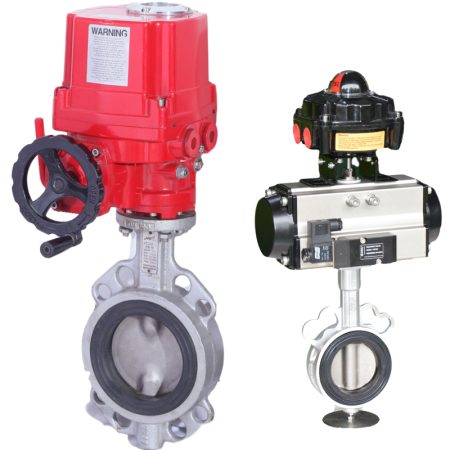
Common Types of Butterfly Valve
Butterfly valves, an integral component in many industrial applications, come in several types, each with its unique features and benefits. The most common types include concentric, double-eccentric, and triple-eccentric butterfly valves. Concentric butterfly valves, also known as resilient-seated butterfly valves, feature a disc that is centered in the middle of the pipe. A rubber lining on the valve body provides a tight seal when the disc is fully closed. This type of valve is typically used in low-pressure and temperature applications due to its cost-effectiveness and simplicity. Double-eccentric butterfly valves, also known as high-performance butterfly valves, have a stem that is slightly offset from the center of the disc and from the centerline of the bore. This design reduces wear and tear on the disc and seat, allowing the valve to handle higher pressures and temperatures. Triple-eccentric butterfly valves, also known as metal-seated butterfly valves, have a disc and stem that are both offset from the centerline of the bore, as well as the seating surface of the disc being inclined and offset from the centerline of the disc. This design allows for even tighter sealing and can handle extremely high pressures and temperatures, making them suitable for critical applications in industries like oil and gas, power generation, and chemical processing. Each type of butterfly valve has its advantages and specific uses, and understanding these can help in selecting the right valve for a particular application.
Description of the different types of butterfly valve.
Butterfly valves, primarily used for regulating or isolating fluid flow, come in various types, each suited to specific applications.
Concentric Butterfly Valves: This is the most basic type of butterfly valve, characterized by a disc positioned in the center of the pipe and a stem that is centered through the disc. The rotation is concentric with the pipeline’s centerline, which makes it ideal for low-pressure and temperature applications.
Double Offset Butterfly Valves: Also known as high-performance butterfly valves, they have two distinct offsets. One is at the level of the seal surface to enable the disc to rotate without contacting the seal. The second offset is at the axis of the valve stem, creating a cam-like motion during operation, reducing wear and tear on the seating material, making it suitable for higher pressure and temperature applications.
Triple Offset Butterfly Valves: These valves have three offsets, two similar to the double offset design, and the third being the geometry of the seating surface. This design allows for a tighter seal, enabling the valve to handle extremely high pressures and temperatures, making them ideal for critical applications such as those found in the oil and gas and power generation industries.
Wafer Style Butterfly Valves: These are designed to maintain a seal against bidirectional pressure differential to prevent backflow in systems designed for unidirectional flow. They are used in systems that require both isolation and throttling.
Lug Style Butterfly Valves: These valves are installed between two flanges using a separate set of bolts for each flange. This setup allows either side of the piping system to be disconnected without affecting the other side. Lug style butterfly valves are used in end-of-line service applications or where the need to run/stop the flow from either side of the valve is necessary.
Explanation of how they work.
Butterfly valves operate on a fairly simple principle. They consist of a disc attached to a rotating stem. When the valve is fully open, the disc rotates to a position parallel to the fluid or gas flow, offering minimal obstruction and allowing free passage. As the valve handle or actuator is turned, the disc rotates about the stem, gradually blocking more and more of the pipe bore until it is perpendicular to the flow, at which point the valve is fully closed. The sealing mechanism varies depending on the type of butterfly valve. In a concentric butterfly valve, the rubber lining on the valve body provides a tight seal when the disc is in the closed position. In double and triple offset butterfly valves, the disc’s unique shape and offset position allow for a tight metal-to-metal seal without over-compressing the seat, enhancing the valve’s durability and ability to handle higher pressures and temperatures. The operation of butterfly valves makes them suitable for both isolation (fully open or closed) and throttling (partially open) applications.
Common Causes of Butterfly Valve Failure
Butterfly valve failure can occur due to a variety of reasons, each stemming from different aspects of the valve’s operation, design, or maintenance practices.
One common cause is improper installation. If a butterfly valve is not installed correctly, it may not operate as intended. This could involve the incorrect orientation of the valve, inadequate tightening of bolts, or misalignment with the piping system.
Another frequent issue is the use of a valve type or material that is not suitable for the application. For example, using a standard concentric butterfly valve in a high-temperature, high-pressure application where a double or triple offset valve would be more appropriate can lead to premature failure. Similarly, choosing the wrong material, such as a disc or seat material that is not resistant to the fluid being handled, can cause the valve components to degrade rapidly.
Improper operation can also lead to valve failure. This includes instances where the valve is used to throttle flow in applications where it is not designed to do so, or where the valve is frequently cycled between the open and closed positions, leading to excessive wear and tear.
Lack of regular maintenance is another common cause of butterfly valve failure. Over time, the disc, seat, stem, or seals may wear out or become damaged. Regular inspections and maintenance can identify these issues early and allow for corrective action before a failure occurs.
Finally, external factors can also contribute to butterfly valve failure. This includes environmental conditions such as extremely high or low temperatures, corrosive atmospheres, or physical damage due to impacts or vibrations. By understanding these common causes of failure, steps can be taken to prevent them, extending the life and improving the reliability of butterfly valves.
Discussion on wear and tear.
Wear and tear on butterfly valves is a natural process that occurs over time due to their continuous use in controlling the flow of fluids. It’s an inevitable part of the valve’s lifecycle, which can be accelerated by factors such as high flow rates, frequent cycling between open and closed positions, exposure to corrosive or abrasive fluids, and operation at high temperatures or pressures. Common signs of wear and tear include leakage around the disc or stem, difficulty in operating the valve, or a noticeable decrease in performance. The disc, seat, stem, and seals are particularly susceptible to wear and tear. Regular inspection and maintenance are crucial in identifying and addressing these issues early on. This could involve replacing worn-out components, lubricating moving parts, or in some cases, replacing the entire valve. Proper selection of valve materials based on the application can also help in reducing wear and tear. For example, using a metal-seated butterfly valve in applications involving abrasive fluids can reduce wear compared to a soft-seated valve.
Influence of improper installation.
Improper installation of butterfly valves can have a significant impact on their operation and lifespan. If a valve is incorrectly oriented, misaligned with the piping system, or not adequately tightened during installation, it may not function as intended. This could result in leakage, difficulty in operating the valve, or even premature failure. For example, if the valve is installed upside down, sediment can accumulate in the body cavity, hindering the movement of the disc and potentially leading to blockages. Similarly, if the valve is not aligned properly with the pipeline, it can put undue stress on the valve’s body and the pipe flanges, leading to deformation or cracking over time. Improper installation can also affect the sealing capability of the valve, causing leakage that reduces system efficiency and can lead to significant losses over time. Therefore, proper installation is crucial for ensuring optimal performance and longevity of butterfly valves. It is always recommended to follow the manufacturer’s installation instructions and to have installation carried out by trained professionals.
Impact of environmental factors.
Environmental factors can significantly impact the performance and lifespan of butterfly valves. Extreme temperatures, either high or low, can cause material degradation or deformation, affecting the valve’s sealing ability and overall operation. For instance, high temperatures can cause thermal expansion of components, potentially leading to leakage or valve failure. On the other hand, extremely low temperatures can make certain materials brittle, increasing their susceptibility to breakage. Corrosive atmospheres can also accelerate material wear and lead to leakage or failure. In addition, physical damage due to impacts or vibrations can affect the valve’s structural integrity and lead to premature failure. Therefore, it’s crucial to consider the environment in which the valve will operate when selecting its material and design. For harsh environments, choosing valves made from more durable or corrosion-resistant materials can help extend their service life. Regular inspections and maintenance can also help identify and address any issues caused by environmental factors before they lead to valve failure.
Consequences of poor maintenance.
Poor maintenance of butterfly valves can lead to a multitude of issues, which can ultimately result in operational inefficiencies or even system failure. Without regular inspections and maintenance, wear and tear on the valve components may go unnoticed until significant damage has occurred. This could lead to leakage, decreased flow control accuracy, or complete valve failure. Additionally, corrosion or accumulation of debris within the valve could hinder its operation or cause blockages. In severe cases, this could result in catastrophic failure, potentially causing extensive damage to the entire system and posing safety risks. Moreover, poor maintenance practices can significantly reduce the lifespan of the valve, leading to increased costs due to more frequent replacements. Therefore, regular maintenance, including cleaning, lubrication, and replacement of worn-out components, is crucial for ensuring the reliable and efficient operation of butterfly valves.
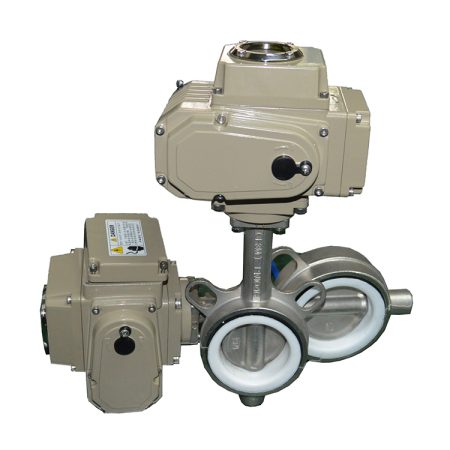
Signs of Butterfly Valve Failure
Butterfly valve failure can manifest in several ways, and recognizing these signs early can prevent costly repairs or even catastrophic system damage. One of the most common signs of butterfly valve failure is leakage. This can occur when the valve’s seals or seat are damaged or worn out, preventing them from forming a tight seal when the valve is closed. Leakage can lead to decreased system efficiency and increased operational costs due to wasted resources. Another sign of potential valve failure is difficulty in operating the valve. If the valve handle is hard to turn or the valve doesn’t open or close fully, it could indicate an issue with the disc, stem, or other internal components. Unusual noises, such as squeaking, grinding, or chattering sounds, can also signal potential problems. These noises could be caused by wear and tear, misalignment, or insufficient lubrication of moving parts. Additionally, a notable decrease in system performance, such as reduced flow rate or pressure, could suggest that the valve is not opening or closing properly. Visual inspections can also reveal signs of potential valve failure. For instance, corrosion, cracking, or physical damage to the valve body, disc, or stem could indicate that the valve is nearing the end of its service life. Regular maintenance and inspections are crucial for identifying these signs of butterfly valve failure early, allowing for timely repairs or replacement and ensuring uninterrupted and efficient system operation.
Explanation of the signs that indicate a failing butterfly valve such as leaks, difficulty in operation, or unusual noises.
Butterfly valves play a crucial role in controlling the flow of fluids in a system, and any sign of failure needs immediate attention. One of the most common signs is leaks. These can be caused by wear and tear of the valve’s seals or seat, preventing a tight seal when the valve is closed. Leaks not only result in waste but also reduce system efficiency and increase operational costs. Another vital sign of a failing butterfly valve is difficulty in operation. If you’re finding it hard to turn the valve handle or if it doesn’t open or close fully, it could indicate an issue with the disc, stem or other internal components. This could potentially lead to a complete system breakdown if left unchecked. Unusual noises are another red flag. You might hear squeaking, grinding, or chattering sounds when operating the valve. These noises could indicate problems such as wear and tear, misalignment of components, or insufficient lubrication of moving parts. Each of these signs points to potential issues that can lead to valve failure, underscoring the importance of regular maintenance and inspections to ensure the smooth operation of your butterfly valves.
Importance of early detection.
Early detection plays a pivotal role in various aspects of life, from health to machinery maintenance. In the context of health, early detection of diseases like cancer can dramatically increase the chances of successful treatment and survival. It allows for more treatment options, less invasive procedures, and generally better patient outcomes. Similarly, in machinery maintenance, early detection of issues such as wear and tear or malfunctioning parts can prevent minor problems from escalating into major failures. This can save significant repair costs, extend the life of the equipment, and reduce downtime. Therefore, whether it’s regular health check-ups or routine machinery inspections, early detection is critical for proactive management and optimal outcomes.
Solutions to Butterfly Valve Failure
Addressing butterfly valve failure promptly and accurately is crucial to maintain the efficiency of a fluid control system. The first step in solving these issues is to diagnose the problem correctly. This can be done through regular inspections and monitoring for signs of failure such as leaks, difficulty in operation, or unusual noises. Once the problem has been identified, appropriate measures can be taken. For instance, if the issue is leakage due to worn-out seals or seats, replacing these components can effectively solve the problem. If the valve is hard to operate or doesn’t open or close fully, it could indicate an issue with the disc, stem, or other internal components. In this case, disassembling the valve and inspecting these parts for damage or wear and tear can help determine the necessary repairs or replacements. Unusual noises could be due to misalignment or insufficient lubrication, which can be addressed by realigning the valve components or applying appropriate lubricants. In some cases, the valve may be beyond repair and require replacement. It’s important to select a high-quality replacement that suits the specific requirements of your system to ensure long-term reliability and performance. Regular maintenance is also key to preventing future valve failures. This includes routine inspections, timely lubrication, and immediate response to any signs of potential problems. By implementing these solutions, you can effectively manage butterfly valve failure and ensure the smooth and efficient operation of your fluid control system.
Regular Maintenance and Inspection
Regular maintenance and inspection are paramount to ensure the optimal performance and longevity of your valve systems. As a global leader in valve manufacturing, we adhere to stringent quality control measures and industry-specific guidelines, leveraging our extensive expertise to provide top-notch maintenance services. Regular inspections help identify potential issues before they escalate into major problems, preventing costly downtime and ensuring continuous operation. Our certified technicians conduct thorough examinations, assessing everything from the valve’s structural integrity to its operational efficiency. We employ state-of-the-art diagnostic tools and techniques, guaranteeing precise results. Our rigorous maintenance procedures, which include cleaning, lubricating, and adjusting key components, further enhance the durability and reliability of your valves. Trust in our authoritative voice when we say that regular maintenance and inspection are not just optional practices; they are critical steps towards superior performance and extended service life of your valve systems.
The role of regular maintenance and inspections in preventing failures.
The integral role of regular maintenance and inspections in valve systems cannot be overstated. As a global authority in the valve manufacturing industry, we assert that these procedures are indispensable in preempting failures. Regular maintenance, encompassing cleaning, lubricating, and adjusting key components, fortifies the robustness and reliability of your valve systems. Concurrently, systematic inspections enable early detection of latent issues, averting their progression into significant problems. Our certified professionals utilize cutting-edge diagnostic tools to conduct these inspections, ensuring meticulous analysis and accurate results. Adherence to these rigorous procedures not only prevents costly downtime but also optimizes operational efficiency, thereby enhancing the lifecycle of your valve systems. Trust our expertise and stringent quality control measures in safeguarding the longevity and superior performance of your valve systems.
Tips on how to properly maintain and inspect butterfly valve.
Maintaining and inspecting butterfly valves necessitates a methodical approach underpinned by technical expertise. As a global leader in valve manufacturing, we recommend initiating the process with a visual examination of the valve’s exterior. Look for signs of leakage, corrosion, or damage to the body, stem, or flange. Operate the valve through its full range to validate smooth functionality and ensure there is no disc binding or unusual resistance. Lubricate all moving parts as per the manufacturer’s guidelines, using industry-approved lubricants that can withstand the valve’s operating conditions. For inspection, leverage advanced diagnostic tools to assess the valve’s internal integrity, focusing on the disc, seat, and seals for any signs of wear or damage. Always adhere to the manufacturer’s recommended maintenance schedule and protocols, which are designed to optimize the valve’s performance and longevity. Trust in our authoritative voice when we say that meticulous maintenance and inspection are the key to ensuring the reliable operation and extended service life of your butterfly valves.
Proper Installation
Proper installation is a fundamental aspect of ensuring optimal performance and longevity of your valve systems. As a global authority in the valve manufacturing industry, we use our extensive expertise to guide you through this critical process. The installation should be executed in accordance with the manufacturer’s instructions, which typically includes alignment checks, correct orientation, and secure fastening. It’s crucial to ensure that the pipeline is free from any debris or obstructions prior to installation. Additionally, the valve must be positioned correctly, taking into account the flow direction and accessibility for future maintenance. Employing torque wrenches or other precision tools can assure accurate tightening of the bolts, preventing leaks or damage due to over-tightening. This meticulous attention to detail during the installation process underpins the reliable operation and extended service life of your valve systems. Trust our certified professionals and rigorous quality control measures to set the standard for excellence in valve installation.
Importance of proper installation to prevent future issues.
The paramount importance of proper installation in precluding future issues is a fundamental tenet in the valve manufacturing industry. As a globally recognized and certified authority, we assert that meticulous adherence to installation protocols is indispensable in safeguarding the operational efficiency and longevity of your valve systems. The exacting process necessitates precise alignment, correct orientation, and secure fastening, executed in strict accordance with the manufacturer’s guidelines. It is imperative to ensure the pipeline is devoid of any debris or obstructions prior to installation. Moreover, the valve must be strategically positioned, considering flow direction and future maintenance accessibility. Utilizing precision tools like torque wrenches guarantees accurate tightening of bolts, thereby averting potential leaks or damage ensuing from over-tightening. This rigorous attention to detail during the installation phase underpins the robust performance and extended service life of your valve systems. Trust in our authoritative voice when we underscore that proper installation is the linchpin in preventing future issues and optimizing valve functionality.
Step-by-step guide for correct installation.
As a global leader in the valve manufacturing industry, we provide you with a detailed, step-by-step guide for correct installation, emphasizing our unwavering commitment to quality control and technical precision.
Pre-installation Inspection: Begin with a comprehensive inspection of the valve, ensuring it is free from any defects or damages incurred during transit.
Pipeline Preparation: Prior to installation, thoroughly clean the pipeline to remove any debris or obstructions that could impair the valve’s functionality.
Valve Orientation: Position the valve correctly considering the flow direction. Ensure the valve’s disc is in a partially open position during installation to prevent damage.
Secure Fastening: Utilize torque wrenches or other precision tools for accurate tightening of the bolts. This prevents potential leaks or damage ensuing from over-tightening.
Operational Check: After installation, operate the valve through its full range to validate smooth functionality. Look for any signs of leakage or unusual resistance.
Documentation: Document the installation process meticulously. This record serves as a reference for future maintenance or troubleshooting.
Trust in our authoritative voice when we underscore that this rigorous adherence to installation protocols is a linchpin in ensuring optimal performance and extended service life of your valve systems. With our globally recognized certifications and technical expertise, we set the standard for excellence in valve installation.
Use of Quality Materials
In the valve manufacturing industry, our unwavering commitment to the use of quality materials sets us apart as a global leader. As an authoritative figure in this sector, we understand that the choice of materials directly impacts the performance, durability, and safety of our valve systems. We meticulously select premium-grade materials, such as stainless steel, brass, or high-density polyethylene, each renowned for their exceptional strength, corrosion resistance, and longevity. Our valves are designed to withstand harsh operational conditions and extreme temperatures, thereby ensuring reliable performance over an extended service life. Our rigorous quality control measures, coupled with our globally recognized certifications, further underscore our commitment to excellence. Trust in our expertise when we assert that the use of quality materials is integral to the production of superior, long-lasting, and efficient valve systems.
The impact of using quality materials on the lifespan of the valve.
As a globally recognized authority in the valve manufacturing industry, we assert with confidence that the use of quality materials has a profound impact on the lifespan of a valve. The selection of premium-grade materials such as stainless steel, brass, or high-density polyethylene – each renowned for their exceptional strength, corrosion resistance, and longevity – is a strategic decision underpinned by rigorous technical evaluations. These materials are designed to withstand harsh operational conditions, extreme temperatures, and resist chemical corrosion, thereby significantly enhancing the durability and service life of our valve systems. Our commitment to utilizing quality materials in our manufacturing process aligns with our stringent quality control measures and internationally recognized certifications, reinforcing our position as a leader in the industry. Trust in our expertise when we assert that the use of superior materials is not merely a choice, but a standard we uphold to ensure the production of robust, efficient, and long-lasting valve systems.
Recommendations for reliable brands or manufacturers.
As a leading authority in the valve manufacturing industry, we confidently recommend a few brands that have consistently demonstrated a commitment to quality, innovation, and exceptional service. Among these, Emerson Electric Co. stands out for its impressive range of valve solutions, rigorous quality control, and globally recognized certifications. Similarly, Flowserve Corporation is esteemed for its technical precision, vast global reach, and robust product portfolio tailored to diverse industry needs. We also commend Cameron International Corporation for its innovative approach to valve technology, distinguished by its industry-specific solutions and unwavering commitment to quality. These manufacturers uphold the highest standards in material selection, design, and production processes, aligning with our own commitment to excellence in the industry. Trust in our expertise when we assert that these brands are reliable partners in ensuring optimal performance and extended service life of your valve systems.
When to Replace Butterfly Valve
In our capacity as a leading authority in the valve manufacturing industry, we understand the criticality of timely valve replacement to maintain optimal system performance. Butterfly valves, characterized by their robust design and efficient operation, are no exception. When it comes to determining the appropriate time for their replacement, several key factors come into play.
Firstly, consider the operational environment and the nature of the fluid passing through the valve. Harsh conditions or corrosive substances can accelerate wear and tear, necessitating more frequent replacements. Secondly, the frequency and quality of maintenance play a significant role. Regular inspections, cleaning, and preventive maintenance can extend a butterfly valve’s service life considerably. However, if you notice persistent issues such as leaks, difficulty in operation, or signs of physical damage despite regular maintenance, it may be time to consider a replacement.
Moreover, monitoring changes in system performance can provide valuable insights. A sudden drop in system efficiency, unexpected fluctuations in flow rates, or increased operational noise could indicate a failing valve. Lastly, consider the age of your butterfly valve. Even with the best care, all mechanical components have a finite lifespan. If your butterfly valve has been in operation beyond its expected service life, we recommend proactive replacement to prevent potential system failures.
Remember that replacing a valve is not merely about rectifying a problem. It’s also an opportunity to upgrade to newer, more efficient models that offer improved performance, longevity, and energy efficiency. Trust in our expertise when we assert that timely valve replacement is a strategic investment in the longevity and efficiency of your systems.
Discussion on when it’s more cost-effective to replace rather than repair.
In the valve manufacturing industry, the decision between repair and replacement is often a complex one, influenced by various factors such as cost, downtime, and overall impact on system performance. Generally, technicians may opt for repairs due to the lower immediate costs compared to replacement. However, it’s essential to consider the long-term implications of this choice. If maintenance costs are continually high or escalating, it might be more cost-effective to replace the valve outright. The prevailing attitude towards asset management is shifting, with an increasing focus on total lifecycle costs rather than just the immediate expense of repair or replacement.
For instance, if the cost of repair is nearing 50% of the replacement cost, it’s often more economical to replace the asset. This ’50 Percent Rule’ is a common guideline used in asset management. Moreover, the age and condition of the valve, frequency of breakdowns, and potential for improved efficiency with newer models should also factor into the decision.
In some cases, the decision may not be about cost alone. For critical equipment where reliability is paramount, replacement might be the preferred option to minimize the risk of future failures. Ultimately, the decision to repair or replace should be based on a comprehensive understanding of the costs, benefits, and potential risks associated with each choice.

Signs that indicate a need for replacement.
In the valve manufacturing industry, recognizing the early signs of valve failure is pivotal to maintaining system integrity and operational efficiency. As a company with an established global presence and rigorous quality control standards, we underscore the importance of vigilance in monitoring these indicators.
One key sign that a valve may require replacement is a noticeable decline in system performance. This could manifest as inconsistent flow rates, pressure drops, or unexplained system inefficiencies. Furthermore, visual inspections might reveal physical damage to the valve, such as cracks, corrosion, or wear and tear on the sealing surfaces.
Operational difficulties, like increased resistance during valve operation or inability to fully open/close the valve, also suggest potential internal issues. Additionally, any leakage—be it fluid or gas—around the valve is a clear indication of compromised sealing integrity, necessitating immediate attention.
Moreover, frequent breakdowns requiring repair, despite regular maintenance, point to an underlying issue that might be more cost-effectively addressed through replacement. Lastly, if a valve has exceeded its expected service life, proactive replacement is a prudent strategy to prevent unexpected failures.
As an industry leader, we advocate for a proactive approach to valve management—replacing valves at the right time not only mitigates risks but also presents opportunities to upgrade to more advanced, efficient, and reliable solutions.
Conclusion
In conclusion, butterfly valve failure, though disruptive and potentially costly, are challenges that can be effectively addressed with the right knowledge and solutions in hand. As a trusted authority in the valve manufacturing industry, we have the expertise to guide you through these complexities, ensuring your systems operate at peak efficiency.
Understanding the common causes of butterfly valve failure – from wear and tear to improper installation or operation – is the first step towards effective problem-solving. It instills confidence in decision-making, whether it’s about implementing preventative maintenance schedules, conducting regular inspections, or deciding between repair and replacement.
With our comprehensive guide, we aim to equip you with the necessary insights to recognize early signs of valve failure. From inconsistent flow rates and operational difficulties to visible physical damage and frequent breakdowns, these indicators should prompt immediate action. Remember, timely intervention not only mitigates the risks associated with valve failures but also optimizes system performance and longevity.
We’ve also highlighted the importance of considering the total lifecycle costs when deciding between repair and replacement. While repairs might offer a short-term solution, replacement often proves more cost-effective in the long run, especially when the costs of recurrent repairs, system downtime, and potential efficiency losses are factored in.
Moreover, replacement presents an opportunity to upgrade to technologically advanced, energy-efficient models that not only meet but exceed the performance of their predecessors. In our continuous pursuit of excellence, we’re committed to offering such innovative solutions that align with the evolving needs of our clients.
In the face of butterfly valve failure, remember that you’re not alone. With our global reach, rigorous quality control standards, and unwavering commitment to customer satisfaction, we’re here to support you every step of the way. Through our robust, high-quality butterfly valves and expert guidance, we aim to ensure your systems continue to operate smoothly, efficiently, and reliably.
After all, at the heart of our operations is the belief that every challenge is an opportunity for improvement. And with each valve failure that we help address, we’re not just solving a problem; we’re contributing to a more efficient, reliable, and sustainable future.
Recap of the importance of understanding butterfly valve failure and their solutions.
In the realm of valve manufacturing, a firm grasp of butterfly valve failure and their corresponding solutions remains paramount. As a global leader in this industry, we underline the criticality of this understanding for maintaining operational excellence and system integrity. Butterfly valve failure, while potentially disruptive, are not insurmountable challenges. They can be efficiently managed and rectified with the right technical knowledge and industry-specific expertise.
Comprehending the common causes of these failures—ranging from natural wear and tear to improper installation and operation—empowers informed decision-making. This includes implementing effective preventative maintenance schedules, conducting thorough inspections, and making judicious decisions about repair or replacement. In essence, understanding marine butterfly valve failures and their solutions is not merely about problem-solving; it’s about optimizing performance, promoting longevity, and driving innovation in valve technology for a more efficient and reliable future.
Encouragement for regular maintenance and use of quality materials to avoid failures.
As a globally recognized authority in the valve manufacturing industry, we cannot overstate the importance of regular maintenance and the use of high-quality materials in the prevention of valve failures. Implementing a routine maintenance schedule is not just a proactive measure—it’s a strategic decision that ensures the optimal performance and longevity of your valves. Regular inspections, cleaning, and timely replacements of worn-out components significantly reduce the risk of unexpected failures and operational disruptions.
Moreover, the use of superior quality materials is crucial. High-grade materials offer enhanced durability, resistance to corrosion and wear, and better performance under various operating conditions. They form the backbone of a reliable and efficient system. As part of our unwavering commitment to excellence, we adhere to stringent quality control standards and use certified materials in all our products. This serves as a testament to our dedication to providing robust, high-performance solutions that meet the rigorous demands of the industry.
In essence, regular maintenance and the use of quality materials are not just recommended practices—they are integral to achieving operational efficiency, system integrity, and ultimately, business success in the highly technical and demanding environment of valve operations.


